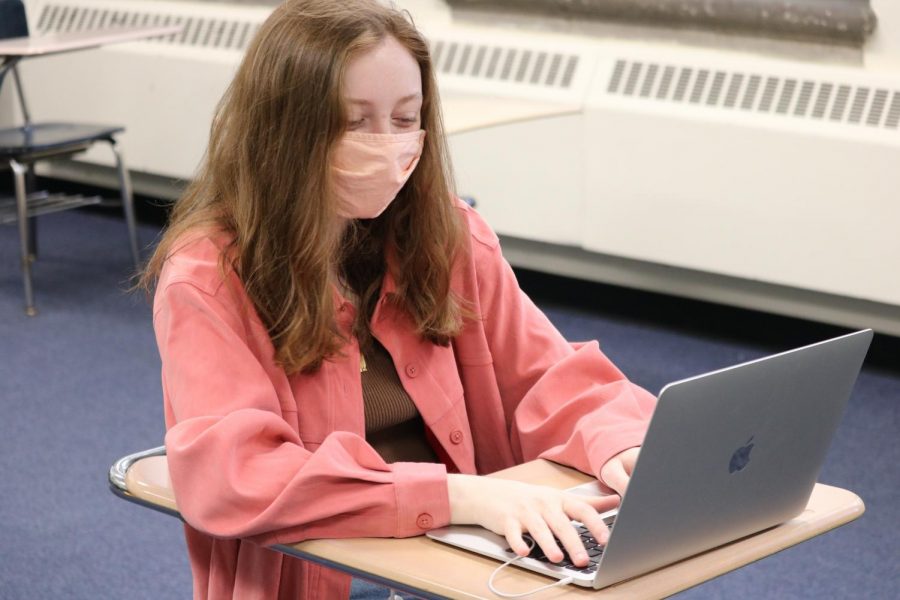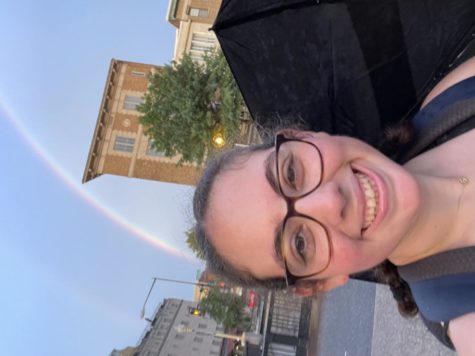Teachers reflect on hybrid challenges, accommodations
Junior Foster Ellen sits in a hybrid classroom.
April 26, 2021
While returning for hybrid instruction was optional for students, most staff members, unless afforded accommodations, returned to in-person instruction.
According to the U.S. Department of Labor, “A job accommodation is an adjustment to a job or work environment that makes it possible for an individual with a disability to perform their job duties.”
“I have a medical accommodation. I’m currently 35 weeks pregnant,” P.E. teacher Jennifer Teonic said. “[But] we are still engaged as much as we can be.”
Employees can apply for these accommodations through the American Disabilities Act, and they are then either granted or denied by their employer. Throughout the COVID-19 pandemic, many teachers have applied for accommodations that grant them the option to teach remotely even after schools have begun hybrid or full in-person instruction.
For some teachers at home, having students in the building has not brought many unprecedented challenges or changes.
“It’s pretty similar in many ways. I try to be as creative as I can with the current setup so everyone can still learn the material that we typically cover in class,” Teonic explained.
The largest change for teachers at home and students in a classroom is that teachers at home have line of sight supervisors in their classrooms. The supervisors’ primary role is to ensure that students in the classroom can participate in class and navigate online resources.
Following the hybrid learning planning days for teachers that took place on April 8 and 9, most teachers returned to their classrooms on April 14 for the first day of hybrid learning. The ETHS administration helped streamline the transition by providing teachers with technology to connect with students in-person and at home.
“It’s kind of nice that I have a webcam that I can turn into almost like a document camera. The technology is much different than what I have at home, and I’m able to actually use a whiteboard in the classroom,” chemistry teacher Gideon Yitref said.
Despite all the planning that went into hybrid, there were bound to be challenging.
“One hiccup I came across is getting the audio to work correctly. And then there are times where I’m looking at the students in front of me [in the classroom] but then I’m looking into the camera for the students at home,” Yitref added.
Some students have experienced similar challenges.
“It was a little frustrating from a student standpoint [and] makes me a little bit anxious,” sophomore Talia Berger-White said.
However, many students and staff members are grateful for the experience of being back in the building for in-person learning.
“[But] the patience that teachers have had, answering questions, and making sure that everyone understands has been really great,” Berger-White said. “Overall, they [have had] a really good understanding of what we’re going through.”












